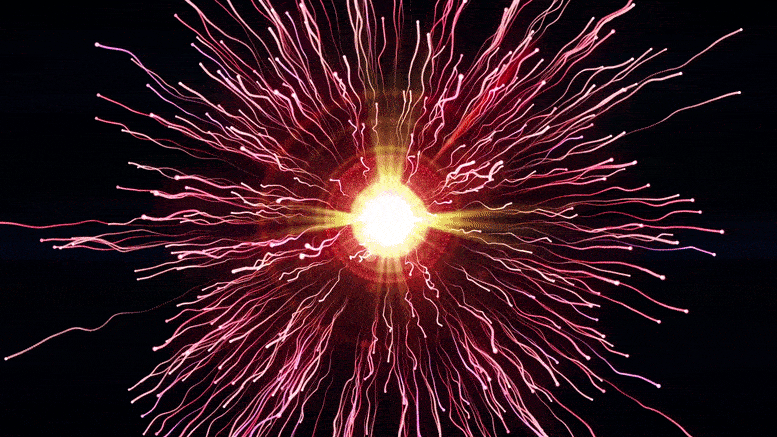
Physicists at CERN create rare short-lived particles, guiding new frontiers in nuclear and particle physics.
At the European nuclear and particle physics laboratory CERN, physicists can produce extremely rare short-lived atoms and molecules. Researchers from KU Leuven have shown that these particles lead the way to uncharted territory in nuclear and particle physics.
One of the oldest active installations at the Centre for European Nuclear Research (CERN) in Geneva is the ISOLDE laboratory. This is where, since the 1960s, radioactive – and therefore unstable – particles, consisting of an exotic combination of protons and neutrons, have been created by sending an energetic proton beam onto a piece of uranium. After production, the particles are ionized and accelerated. The use of electromagnetic fields makes it possible to sort these particles on the basis of their mass and lock them in a ‘trap’ for a couple of milliseconds.
Next, packages of well-chosen isotopes (atomic nuclei with a specific number of protons and neutrons – thus a specific mass) are sent through various experimental set-ups, making it possible to examine the properties of these highly unusual or ‘exotic’ combinations of protons and neutrons in greater detail. Researchers have been doing this for over fifty years at the ISOLDE lab, which is currently led by Gerda Neyens, professor of nuclear physics at KU Leuven. The lab is still one of the world’s leaders in its field, precisely because it keeps developing new experiments, and because it continues to refine the methods for the production and selection of the most exotic isotopes.
Extremely sensitive and precise measurement
In 2014, a new measurement set-up was put into use that makes it possible to determine the size and electromagnetic properties of highly exotic atomic nuclei. The technique, known as Collinear Resonance Ionisation Spectroscopy (CRIS), is extremely sensitive and very precise. Even for very small numbers of isotopes, the technique can be used for measurements. As a result, it recently became possible for the first time to study the size of the most exotic atomic nuclei with very high precision. “At the start of the development of CRIS, we wanted to improve the sensitivity by a factor of five hundred compared with existing methods, and the precision by a factor of ten,” says Gerda Neyens. “We have succeeded.”
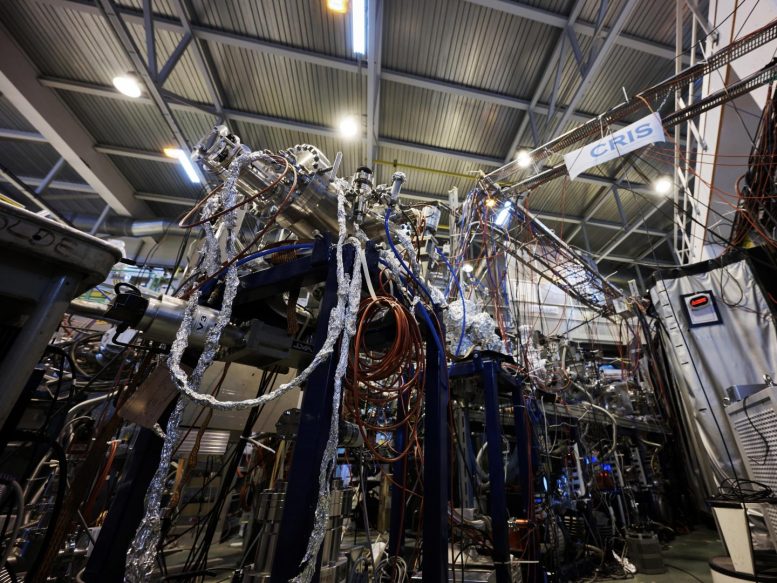
Collinear Resonance Ionisation Spectroscopy (CRIS) makes it possible to determine the size and the electromagnetic properties of highly exotic atomic nuclei. Credit: © CERN
Neyens’s former doctoral student Ruben de Groote, who has since obtained his Ph.D. in nuclear physics from KU Leuven, played a leading role in this development. As part of his doctoral research, de Groote improved the CRIS technique to the point where it was sensitive enough to examine the fundamentals of nuclear physics. For one, he was able to produce and study what is known as superexotic atomic nuclei, which only exist for a fraction of a second. These included about twenty different isotopes of the element copper (which has 29 protons in its nucleus). “The number of protons in the atomic nucleus determines the chemical properties of an atom, how it behaves in reactions with other elements,” de Groote explains. “But the number of neutrons in the core determines its physical properties, such as the size and weight of the atomic nucleus, or its lifespan.”
The neutrons are also crucial to keep the protons in the nucleus together by means of the strong nuclear force. Neyens: “In the case of copper, we don’t yet know exactly how many neutrons we can add to 29 protons.” The upper limit for the number of neutrons, in other words, is still unknown. Different theoretical models each predict different limits. “Our research aims to determine the properties of the most exotic isotopes, so that we can test these models,” says de Groote.
Most exotic copper isotope
By improving the sensitivity and precision of the CRIS method, de Groote was able to map the size of various copper nuclei, up to and including that of the copper-78 isotope, which contains 49 neutrons. This allowed him to explore uncharted territory on the ‘nuclear chart’. An impressive feat, because only twenty copies could be produced per second of the most exotic copper isotope (copper-78) they were able to study. What is more, these nuclei only exist for a mere 335 milliseconds.
De Groote was able to show that, as expected, the size of copper nuclei gradually increases with their atomic number when neutrons are added, but that this trend suddenly stops when 46 neutrons are present in the nucleus. From this point on, the size remains constant until copper-78. With 49 neutrons, this isotope is close to the ‘magical’ number 50. “Nuclei with 50 neutrons turn out to be much more robust than other nuclei,” says de Groote, “even though these copper nuclei contain almost three times as many neutrons as protons.” The study by de Groote was published in Nature Physics.
“We have zoomed in on an exotic but crucial region of the nuclear chart, which allows us to test the latest nuclear physics models,” Neyens adds. On the nuclear chart, the so-called doubly-magical nuclei are anchor points. “These nuclei are the cornerstones of our models that describe how, for instance, the strong nuclear force holds the nuclei together. This force is more difficult to describe than, for instance, the electromagnetic force, because it acts on the basic building blocks of atomic nuclei, the quarks. Describing nuclear properties starting from the strong and weak interactions between the sub-nucleon particles remains a challenge to this day.”
The balance between matter and antimatter
The CRIS technique paves the way for more insight into nuclear physics, but its potential application goes beyond this. Physicists can also use it to find answers to the most fundamental questions about our universe. The measurement method can also be used to examine exotic molecules, in which one of the atoms contains a radioactive nucleus. In the ISOLDE lab, such radioactive molecules were produced for the very first time, after which they could be examined with the CRIS method. “The properties of the molecules (RaF or radium fluoride) that we have studied were only known theoretically, because these molecules only exist in radioactive form,” says Neyens. “Our measurements have shown that the theoretical predictions from quantum chemistry are correct, and that these molecules are therefore sensitive enough to detect deviations in the prevailing standard model of particle physics.”
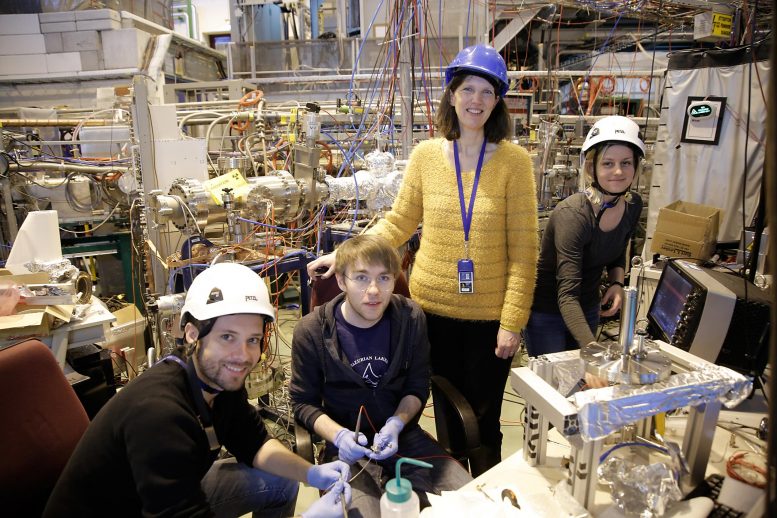
Professor Gerda Neyens at the ISOLDE lab with (from left to right) researchers Ronald Garcia Ruiz, Adam Vernon, and Agi Koszorus. Credit: © KU Leuven – Rob Stevens
The CERN physicists have shown that RaF molecules can be used to look for what is known as an electric dipole moment. If one of these is found, it would mean that there are not only magnetic north and south poles, but electric poles as well. Such an electric dipole also fascinates cosmologists, because its existence could explain why the balance between matter and antimatter in the universe is skewed. In fact, there is hardly any antimatter, even though matter and antimatter must have originated in equal quantities when the Big Bang occurred.
Nature has just published an article in which lead author Ronald Garcia Ruiz (who also obtained his Ph.D. at KU Leuven in Neyens’s team and is now affiliated with MIT) and Ruben de Groote show that different RaF isotopes can be produced and isolated from each other, and that their chemical properties are perfect to search for deviations from the standard model. Neyens and de Groote are currently setting up a collaboration with Garcia Ruiz for a renewed search for the electric dipole moment. De Groote: “We want to further close the gap between the most sensitive measurements and the theoretically-predicted value of the dipole moment, which, according to the standard model, is incredibly small.”

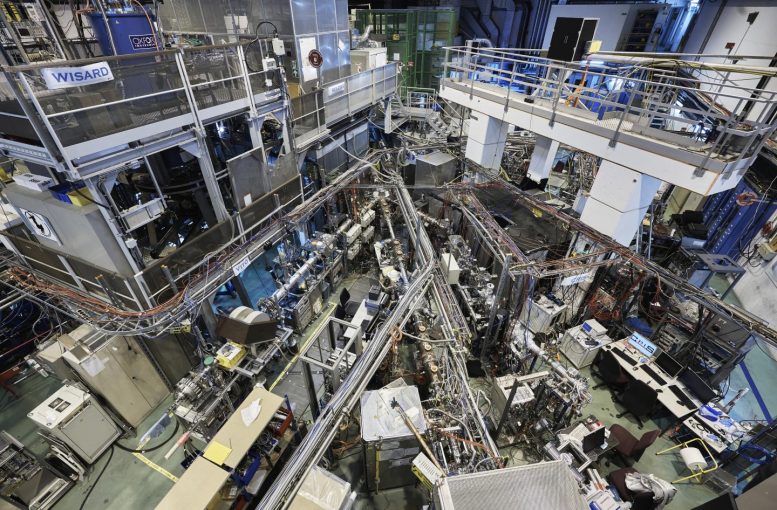
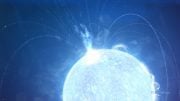
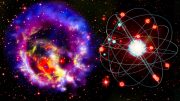
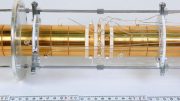
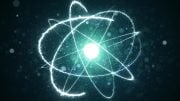
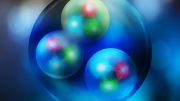
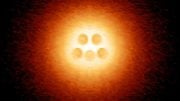
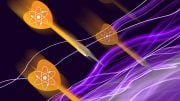
Be the first to comment on "Exotic Particles Offer Deeper Insight Into Matter and Antimatter"